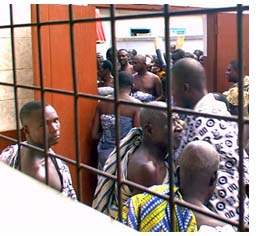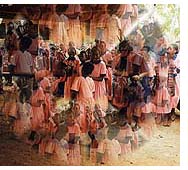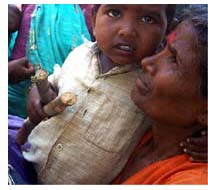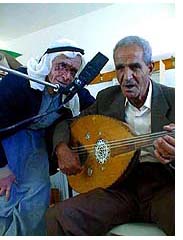|
 Greenstar Corporation for print publication in the British journal, Sustainable Development International of this document, suitable for printing, in Acrobat format
1. The Divide is More Than Digital Think about economic development in emerging countries for a moment -- and you may conjure up grotesque images: smoke-belching factories, workers packed into dense megacities, the rape of rain forests, open-pit mines, the exploitation of women and children in sweatshops. These ugly images have aroused the conscience of people around the world, who have headed into the streets in recent years to protest the World Trade Organization, the World Bank, the G8, the World Economic Forum and other international organizations that are seen as part of the problem. While some of these images are accurate, the real truth is even worse.
The "digital divide" is much-lamented and debated by coalitions, conferences and corporations. But there are many more divides in addition to the digital -- electrical, telephonic, media, economic, educational, social and environmental. These divides reinforce each other; they amount to a virtually complete disconnect between the economic top third of humanity and the bottom third. Fortunately, there are constructive solutions; this article points to some of them, and to how anyone can get involved. 2. Top-down Economic Aid -- Bankrupt We in the connected world know the consequences of the great divides intuitively; we see the ugly images, we hear the tortured sounds, we read the tragic stories. But we avoid thinking about it, because it paralyzes us -- the problems are too complex, the solutions just seem to create more problems; there is apparently no meaningful action that one person can take. Out of sight, out of mind. And out of pocket, too, apparently. Macro political and economic policies are a reflection of the common paralysis. The money spent by the West, especially the United States, on aid to poor nations has declined steadily since the mid-70s. A fearless indictment on the subject of economic development policies under the Clinton Administration (which are now in the process of being tightened even further by the Bush Administration) came from a Harvard professor, Jeffrey Sachs, speaking in the cathedral of the World Bank in Washington:
Big business is not asleep to the implications, and to its responsibility to play a pro-active role. Mark Moody-Stuart, Chairman of the Royal Dutch/Shell Group, said recently,
 3.
It's All About your Connections 3.
It's All About your Connections
The disconnected cannot be relied upon to remain passive and silent indefinitely, as their families sicken and starve, as their stake in the future shrinks. They will be heard, one way or another, in ways that cannot be ignored. If they are not connected, respected and made full partners in a positive future, they will be heard in other ways: through cartels, boycotts, ultra-nationalism, xenophobic fundamentalism, militarism, terrorism, and revolution. Perhaps they can be heard through an enlightened partnership, a respectful dialog, a connection in which everyone has something important to learn and to gain from everyone else. It's time to try some new ideas: bold, impossible ideas. Ideas in which everyone, rich and poor, north and south, connected and disconnected, can participate and create value. A good starting point is a skeptical look at one of the most powerful transforming forces in the developed world -- the connecting power of the Web. Though the Internet is not the panacea that many hoped for, it does serve as an example of a new style of approach -- communications from the edge rather than the center, from many individuals to many other individuals, globally, unmediated, without a centralized point of control. Together with other tools, perhaps the Internet can teach us something about unleashing hidden value in the developing world. As Larry Irving, former Deputy Secretary of the US Department of Commerce commented,
4. Hidden Values So what do the isolated poor have to offer, in a fast-moving global cyber-economy? The old answers were cheap hands and abundant natural resources. But those vestiges of post-colonialism create dependency, drain human potential, devastate the environment and cannot be sustained. And those sweatshop paychecks are only available in crowded, toxic third-world cities: the labor of the two billion disconnected who live in 600,000 remote villages is so far away that it's not even worth exploiting. There is an unknown, unrealized asset of the disconnected that exists precisely because of their disconnectedness. It is priceless, unique, of universal value, and easily exchanged worldwide. That asset of the disconnected is their voice, their vision, their intimate connection to tradition, to the earth, their families, community, their history, wisdom and legends: their culture. The more isolated a village, the more likely that it harbors music, artwork, poetry, traditional herbal knowledge, legends and ways of living that are of supreme value: real, authentic expressions of human life that have been lost in the connected noise of industrial culture.
 thou heart of heaven and earth, thou giver of what is yellow and what is green, and thou giver of daughters and sons: drip down, pour down thy greenness, thy yellowness; give thou, pray, life and sustenance for my children and my sons that they may multiply, that they may continue as nourishers to thee and supporters to thee, calling upon thee in the paths and roads, at the rivers and canyons, under the trees and bushes
In fact, the connected/disconnected dichotomy may be inverted: people in remote villages may, in some cases, be more connected to themselves, to their families, communities, to the earth, than people who live in the post-modern, wise and cynical media world, where every culture is recycled, fused with others, parodied and echoed in an endless attempt to create something novel. We in the developed world may have vital lessons to learn from traditional people, in terms of how and why to live as a human being. Can these cultural expressions be recorded, organized in a digital package, presented by the people themselves in a living form to share with the world, without perverting their simplicity and originality? Can markets be created for these digital culture products that generate income for traditional people, to bring them the health, education, energy and communications services they need and close the great divides, and earn for them the tools of an independent future? Can this be done in a sensitive, decentralized way so that delicate traditions are not polluted in the process? In Sarawak, Borneo, where this process is underway; a tribal leader explains:
5. The Significance of a Song, an Image, a Story... There is a "cultural ecology" element to this idea as well. The diversities of human language, history, music, legend and image are just as important to protect as the physical ecology of ocean, atmosphere, earth, rainforest and river. As the developed world's McCulture becomes increasingly homogenized, the distinct, varied voices of the villages of Honduras, Tanzania, Jordan, New Mexico, Bangladesh and Mongolia will be seen as just as precious -- and just as vital to the survival of the earth -- as the redwood, the butterfly, the eagle, the whale, the hummingbird and the tiger.
The traditional voices which retain that meaning and connection are endangered, just as much as the ozone layer and the harp seal. Oral traditions are fragile, like an ecosystem -- they depend on the continuous effort of fathers speaking to sons, of mothers speaking to daughters, of old people sharing honored history, and of young people growing up in respect for the wisdom of their village heritage. These fragile links are easily fractured in remote communities. Cultures which took thousands of years to refine can vanish in a couple of generations if their young people stop believing in them. This is happening all over the world today, as young people in traditional communities are lured away to the bright lights of the megacities. Our generation could see a great spasm of cultural extinction, as priceless human legacies that reach back into pre-history vanish. Can markets be created for digital culture products that generate income for traditional people? Can these cultural expressions be recorded, organized in a digital package, presented by the people themselves in a living form to share with the world, without perverting their originality? Could the resulting income be used to bring to remote villages the health, education, energy and communications services they need and close the great divides, and earn for them the tools of an independent future? Can this be done in a sensitive, decentralized way so that delicate traditions are not polluted in the process?
6. Balanced Prosperity Wealth that begins with this idea of "cultural ecology" builds pride, strengthens the family and the village, makes it possible for people to earn income where they live without being exiled to serfdom in the city...and through creating new, hard-currency income it allows them to acquire critical basic resources like clean water, access to health care and education, electric power, telephones, computers, and a connection to the Internet. With these tools, people can begin to build a balanced prosperity for themselves, creating their own jobs and income, with access to both local and world markets. They can harness their entrepreneurial instincts -- and break the vicious cycle of dependency and indignity which traditional economic aid programs, for all their good intentions, tend to perpetuate. On the cultural ecology platform, many other important initiatives can flourish, such as improved local trade and marketing, teleworking via satellite, micro-finance, telemedicine, decentralized publishing and broadcasting, international student and teacher networking, and the use of renewable energy technologies. The forgotten and isolated billions who labored in 20th century sweatshops could become the creative, prosperous citizens, teachers and partners of the 21st century. As they earn the tools of economic independence and improve their daily lives, the whole world could be enriched with bright, diverse images, sounds and stories -- and our global culture could be enriched with vivid, ancient energies.  Here are some of the groups active in this area, that offer the opportunity for engagement and creativity:
 Paul Swider: pswider@greenstar.org all photos © copyright Greenstar, 1999-2001
|
 Much of the world is "off-the-grid"
-- disconnected from the most basic tools that might empower
isolated people to emerge from the shadows. More than two billion
people live without electricity; more than four billion rarely
make a phone call. Three billion people have never seen a doctor;
more than a billion adults cannot read or write at all. At the
dawn of the 21st Century, this disconnection is not only morally
wrong -- it's also wasteful and unnecessary. It's a tragic squandering
of human capital.
Much of the world is "off-the-grid"
-- disconnected from the most basic tools that might empower
isolated people to emerge from the shadows. More than two billion
people live without electricity; more than four billion rarely
make a phone call. Three billion people have never seen a doctor;
more than a billion adults cannot read or write at all. At the
dawn of the 21st Century, this disconnection is not only morally
wrong -- it's also wasteful and unnecessary. It's a tragic squandering
of human capital. During
the course of colonial expansion and industrial development,
the rich nations became rich at the expense of traditional culture.
Old ways, binding us to one another and our surroundings, were
thought to impede "progress," so they were cast aside.
Now that the rich world has achieved material wealth, we faintly
recognize what we abandoned, but cannot recover. We're drowning
in a sea of riches, and starving from lack of a reason for it.
An instinctive sense of meaning has been lost, a void that we
barely understand, yet feel intensely. Could that sense of meaning
be the most precious resource of the new century?
During
the course of colonial expansion and industrial development,
the rich nations became rich at the expense of traditional culture.
Old ways, binding us to one another and our surroundings, were
thought to impede "progress," so they were cast aside.
Now that the rich world has achieved material wealth, we faintly
recognize what we abandoned, but cannot recover. We're drowning
in a sea of riches, and starving from lack of a reason for it.
An instinctive sense of meaning has been lost, a void that we
barely understand, yet feel intensely. Could that sense of meaning
be the most precious resource of the new century?